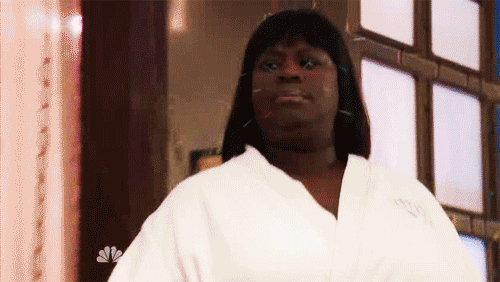Acupuncture
Did you ever get your arms to ‘float’ after pressing the backs of your hand against a doorway? Remember how they would get so sore, pushing against the walls just a few seconds more, then finally raising them to the air and it was like you were flying?
That release of pressure into a sense of freedom and joyfulness is everything acupuncture is about. Except it gets you there by inserting tiny, flexible needles all over your body. (Trust me, it’s more relaxing than it sounds!)
I know that these days you don’t need to press your hands against a doorway to feel tension in your life. Whether physically, emotionally, or in your relationships, many of us are both sore and depleted. It’s not so easy to find the release point, but that’s why we have acupuncturists.
I first decided to try acupuncture after I started to hear my blood circulating in my right ear whenever I’d lay down in bed. It disturbed me a bit, not just because of the noise but also because I was worried about a blood clot or maybe a pinched nerve that could lead to more serious health issues. Amazingly, it only took two (TWO!) weekly sessions before I stopped hearing the noise! I was so impressed that I asked my acupuncturist what else the needles could help me with, and now I come back for support with everything from headaches and insomnia to anxiety and self-esteem. I often leave her office feeling energetically scrubbed, clear-minded and open to have a lovely day ahead of me.
What’s an appointment like?
Acupuncture is a quick appointment where you relax on a massage bed for up to twenty minutes with the needles stuck in the selected acu-points. During this time, the points are stimulated, breaking apart energetic blockages and relieving tension held in the body.
Your acupuncturist should check in with you before getting started at every appointment to see how you’re doing so they can either confirm or switch up the points. For the first two-ish months of my treatment, I went weekly. Once I was consistently feeling good, we moved it down to once a month for maintenance.
Did you know?
Acupuncture is absolutely ancient, with perhaps 8,000 years of practice (sharpened tools dated around 6000 BCE are suspected to have been used for acupuncture). The first known documentation of acupuncture can be found in The Yellow Emperor’s Classic of Internal Medicine, dated 100 BCE, which compiled information passed down for generations through community tradition.
The World Health Organization recognizes a whopping 361 acu-points on the body, but some traditional teachings claim there are at least 2,000 points, each with their own healing potential! All the points are connected through channels of energy, called meridians (see image above).
Modern scientists are studying it, acu-points are real! Even unstimulated acu-points in the wrists were found to have higher oxygen pressure levels (see images above). In a separate study using modern CT scans, a higher density of micro-blood vessels were found compared to non-acu-points. Even more studies using MRI’s, infrared imaging, thermal photography and ultrasounds consistently find acu-points hold greater energy than elsewhere in the body.
Acupuncture is the most widely used traditional medicine practice globally, and continues to grow in popularity. Because of its popularity, scientific studies have been funded to explore the benefits of acupuncture, which has fueled its growing use and acceptance even more.
There is an entire philosophy backing acupuncture - Taoism. Taoism is where we find teachings about yin and yang, the complementary forces of energy. Yin and yang must find their balance for health and harmony, and yet are always changing in form. In the diagram to the left, you can see how yin and yang flow through each season of the year (in Traditional Chinese Medicine, there are five seasons). The seasons are further associated with an element and two meridians, each named after an organ, used in acupuncture. Feel free to browse these articles if this fascinates you as much as it does me - highly recommend :) - spring, summer, late summer, fall, winter.
How acupuncture can help you:
Modern users are often first drawn to acupuncture for its remedy in muscle and joint pain, but you’d probably be surprised at the long list of concerns it can address! Acupuncture is equally about healing mental and emotional imbalances as physical imbalances. As all holistic medicine claims, everything is interconnected.
Here are just a few symptoms acupuncture can remedy, as recognized by John Hopkins Medicine:
Complications from medical treatments like surgery or chemotherapy
Digestive distress
Gynecological concerns like menstrual pain, infertility, and morning sickness
Headaches, arthritis, muscle pain and weakness, sciatica
Anxiety, depression, insomnia, addiction, stress management
Each acu-point in the body also connects with a specific mental or emotional blockage (such as releasing self-judgment, fostering bravery, or strengthening boundaries).
You can even get cosmetic acupuncture to relieve tension in your face!
Let’s give it a try!
Let the pros help you on this one. Search the web for an office in your area and schedule an appointment!
There are several ways you can receive acu-treatment from a professional:
Needles (acupuncture)
Pressure (acupressure)
Heat (moxibustion)
Friction
Suction (cupping)
Impulses of electromagnetic energy
Here’s a tip!
If you want to give it a try at home, get yourself an acupressure mat. Tip from my acupuncturist: use the mat for 5-10 minutes right before bed, especially if you are an ADHD’er with sleep issues!
Treat. Yo’. Self.
Parks and Recreation: S4, E4





